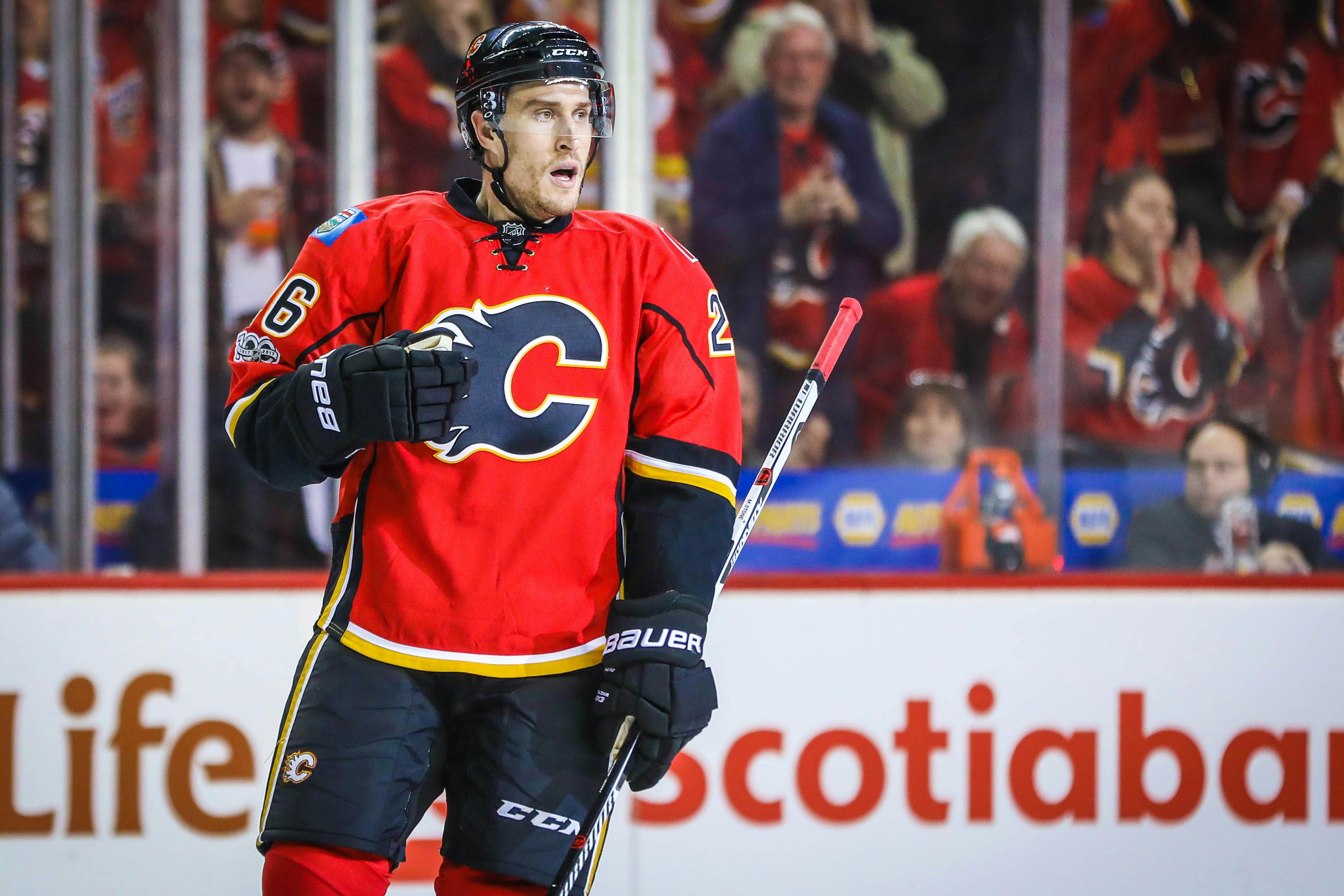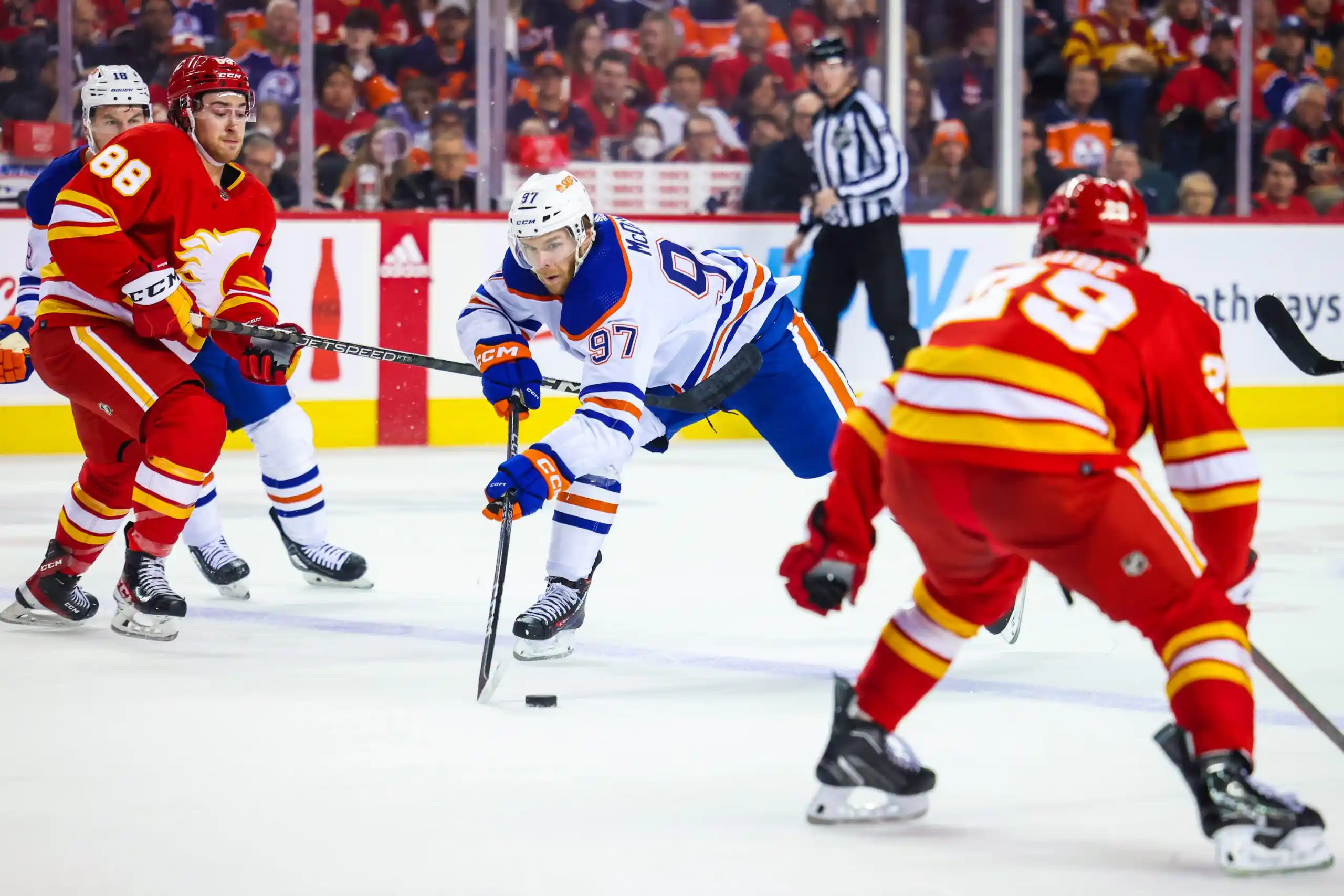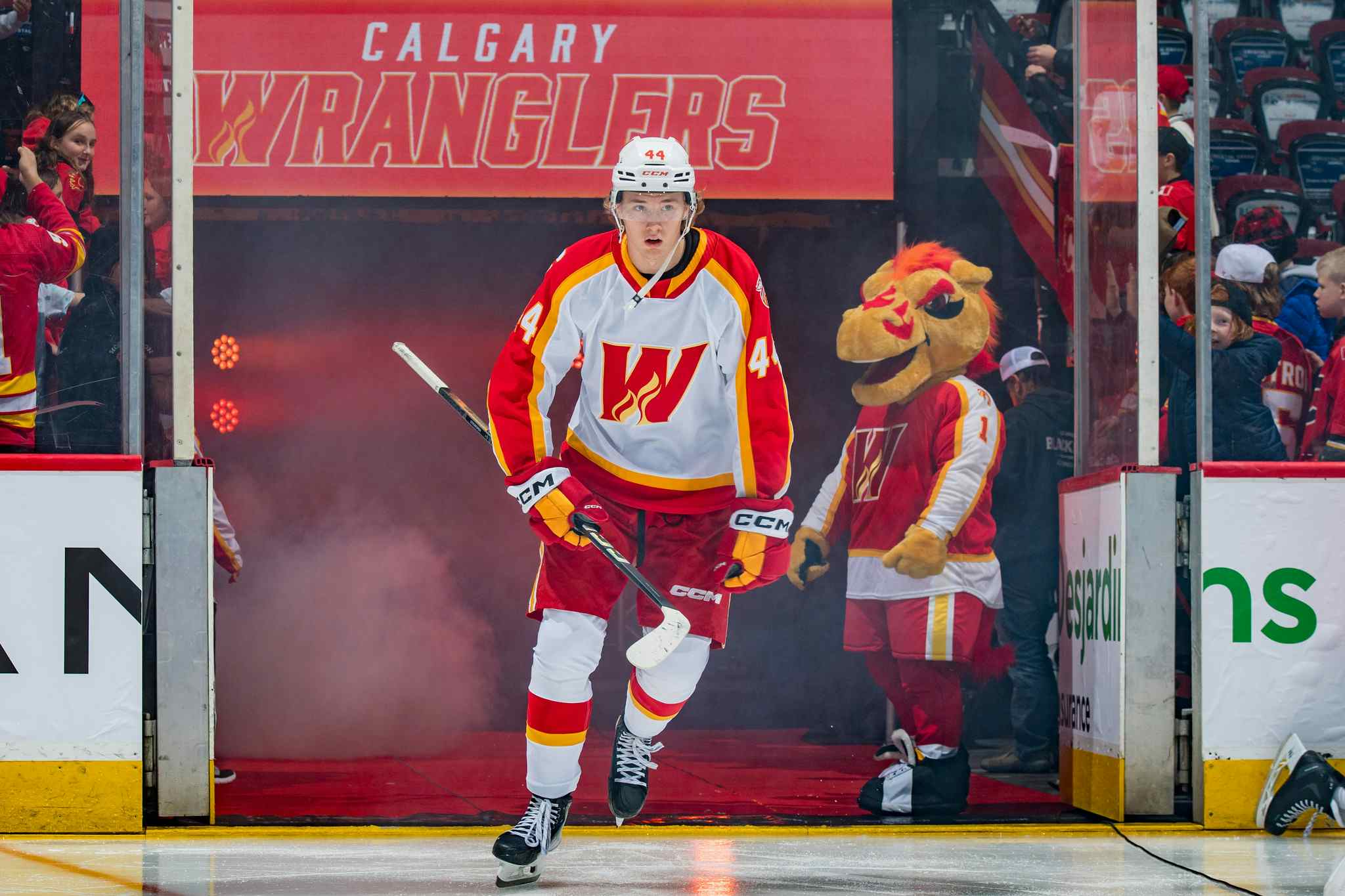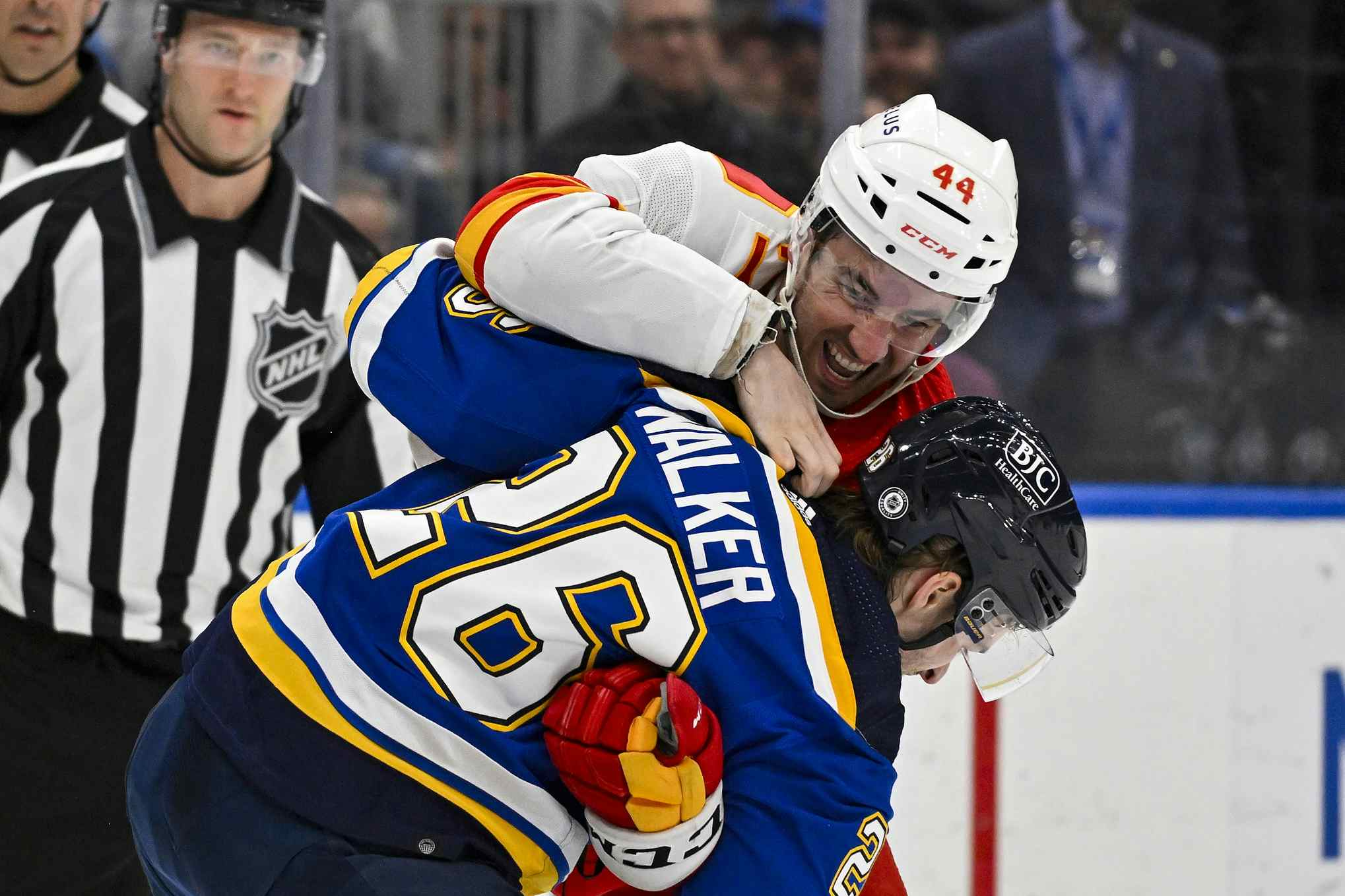Does it make sense for Michael Stone to come back?

We don’t need to remind you, but the Flames acquired Travis Hamonic this weekend. That solves the second pairing RHD problem.
By making this move, it would seem to signify that previous 4D occupant Michael Stone would be done with the team. They filled his spot with a defender that is much better than he is, and someone they paid a handsome price for.
Not so fast. Even after the trade went through, Brad Treliving said that he was still interested in bringing Stone back. That’s interesting, to say the least.
I’m sure the team likes Stone, and Ari gave some reasons why (and why not) the team could be interested in bringing him back. I can’t read minds, but given what I know of Treliving, Ari’s points are probably some of the things going through his head.
But here’s the flip side: the team may be interested in Stone, but would he be interested in them? Even if the team wants him to come back, there’s probably few reasons that he wouldn’t (and honestly, shouldn’t) be interested.
A series of precedents
Of course, no contract exists in a vacuum. Every player’s value is determined by players before, and every contract’s value is determined by contracts before, both at a league and team scale. There’s almost too many factors involved, but some of the big ones are age, previous performances, teammates’ performances, position, salary cap, etc.
Real life is a bit more nuanced with such things, but that’s the gist of it. Here’s some of those factors that are at play for Stone’s upcoming contract.
1. Stone’s previous contract
His previous contract was a pretty bold one by the Coyotes. After ending the 2015-16 season with an injury that required surgery to both his ACL and MCL, the Coyotes gave him a one-year, $4M contract on July 28. Very rich, but also very tempered.
Up to that point, Stone had arguably been one of the better defenders, and one of the better pieces, on a shaky, constantly rebuilding Coyotes team. He certainly earned his keep, but the knee injury complicated things. If things turned ugly, term would only get worse. This was a “show me” deal at age 25.
And as we’ve shown before multiple times, it did indeed get ugly. Stone’s underlyings, both in Calgary and Arizona, were a steep decline from what he was doing in years previous. He did not show it to the Coyotes, so they traded him.
Although arguably, he did show it in Calgary. He was one of the late season stories, and we wouldn’t be having this conversation if he had not impressed during his stay here.
The perception, or at least the perception that could be argued, is that the Flames recovered the good Michael Stone from the desert. At the negotiating table, Stone’s side could argue that his performance after leaving Arizona indicates that Arizona was the problem, and that he is still worth that pretty decent paycheque he received. He played the same role on both teams, and his perceived improvement indicates that he has fulfilled his end of the contract.
2. Travis Hamonic’s current contract, and his existence in general
As many pointed out, part of the reason Hamonic’s price was so steep was because of his beautiful contract. At an AAV of $3,857,143 until 2020, Hamonic is going to be providing some sweet, sweet value to the club. Hamonic’s contract comes $142,857 short of Stone’s last contract, if you did the math (aside: what a weird number of dollars to pay a person).
That puts constraints on Stone’s next contract value. First, even if he feels he has performed to the level his previous contract demanded, he’s certainly not going to make more than Hamonic. If we do some rough math, the difference between Hamilton and Hamonic, the first and second pairing RHDs, is $1.7M. Following that logic, Stone would then make $2.1M. That seems a bit low, so perhaps he could argue that he can get paid like Deryk Engelland, the previous third pairing RHD, at $2.9M AAV. That seems like a fair amount.
But looking at the previous contract, that’s a pretty big drop in salary! He essentially loses $1.1M on the basis of having to play with the Arizona Coyotes for most of the year. Even if the Flames see him as an upgrade on Engelland, they probably don’t want to pay him more than that given that they need to deal with RFAs and, potentially, UFAs. Paying over Engelland money to your third pairing defenceman is not a great idea.
$2.9M is certainly fair third pairing money, but Stone is fancied as a second pairing guy. Hamonic is the second pairing guy. If Stone wants to accept the demotion and paycut to third pairing that’s fine, but he has some stiff competition there.
3. Kulak coming, Andersson approaching
The thing about a third pairing spot is that it’s a depth spot. Ideally, you should be able to easily dispose of your 5/6D. They should be cheap (yet effective) players, because signing expensive-ish ones is going to be a headache, both for fans and the cap.
Luckily, the Flames have built up some great prospect depth on the backend. They’re going to start the process of the farm taking over the defence (arguably, this started with T.J. Brodie, but for the sake of this article) with Brett Kulak, mercifully saved from the clutches of the Vegas Golden Knights. Based on results from the previous two NHL and AHL seasons, it’s kind of hard to argue that he won’t have that spot come October.
And that’s fine because he’s left handed. Given Gulutzan’s strict lefty-right policy, Stone can simply slot right next to Kulak. That’s probably a decent pairing in sheltered opportunities.
But there’s also Rasmus Andersson, a kid who is right behind Kulak on that depth chart. The team really liked what they saw from him as an AHL rookie, and given that they let him hang around the big team during the drive to the playoffs, it’s likely they’re eager to give him a chance at a starting spot next year. Hell, the team recalled Andersson when Stone went down with an injury. That says something.
Who really knows if Andersson is 100% ready to make the jump, but he’s going to put in a solid case during training camp, and that drives Stone’s value down further. You already can’t argue that Stone deserves to make more than Hamonic, but if the team says that they would not mind a kid on an ELC in that position, what exactly can Stone do but take another pay cut?
He already has to take a cut because of Hamonic, but Andersson forces a second cut. Why pay someone between $2-$3M if you can get someone to do the same job for about 40% of the cost? We should doubly consider that Andersson’s contract stops sliding next year. If they don’t start playing him in the NHL now, they lose a cheap year for essentially nothing, which is probably something the club doesn’t want to do.
That also limits Stone’s ability to get term. The team wants to graduate prospects, especially the highly touted ones they have at various levels of the org. Even if Andersson isn’t ready this year, the max he’ll get is a one year deal, as Andersson will probably be ready the year after, if he isn’t already halfway through this season. Stone probably doesn’t want to be here on a one year deal, while the Flames probably don’t want him on anything longer than that.
Combined with #2, there’s some severe flexibility limits on Stone’s next contract. He’s not getting a lot of money for a 5/6D position, and he’s not getting a lot of term, if any, because there are prospects knocking on the door. That would probably be too many cuts to his overall contract value for Stone to seriously consider.
4. A knee injury and the sands of time
And that’s probably something he should be considering at the point in his career.
Occasionally, you have to take pay cuts in hockey. Part of getting another job in this business is occasionally taking less money and less term just to stick around one more year. As explained, Stone will probably not want to do that.
The primary concern surrounding Stone is the fact that his decline in play likely came from the terrible knee injury he suffered at the end of 2015-16. Now, perhaps that can be interpreted in multiple ways. Perhaps this previous season and his struggles can be written off as a recovery year. This could also be a permanent thing. Only time will tell.
But if you’re Stone, or perhaps his agent (seems like the more appropriate option), why would you not cash in on one last big payday?
If the hype is real and many other teams see him as a 4D and want to pay 4D money, how could Stone say no to that? He has the potential to earn a similar amount of money as his last contract, and given the realities of knee injuries -specifically, their tendency to make the knee weaker and more susceptible to future injury while taking a toll on athletic ability- it seems that you take the money and run.
The reality of this league, and pretty much every other major sports league, is that athletic ability is fleeting and temporary. The window to actually make your money is usually twelve to fifteen years, if you’re lucky. There have always been exceptions, but for the most part, 30 is the age where deterioration occurs rapidly.
Stone is 27. He has already suffered a major knee injury. That countdown to being obsolete has begun, and has probably been expedited. It’s going to be hard to guess where he is in a year, but Stone would probably want some contract security if it goes bad. If the worst case scenario happens and Stone does not recover post-injury, it would be career suicide to take a short term deal for low cash, become a depreciated asset, and only get PTOs and veteran’s minimum afterwards.
If his agent is worth any money, he’s telling Stone to ignore the guys underselling him and go for the big bucks.
Recent articles from christian tiberi





